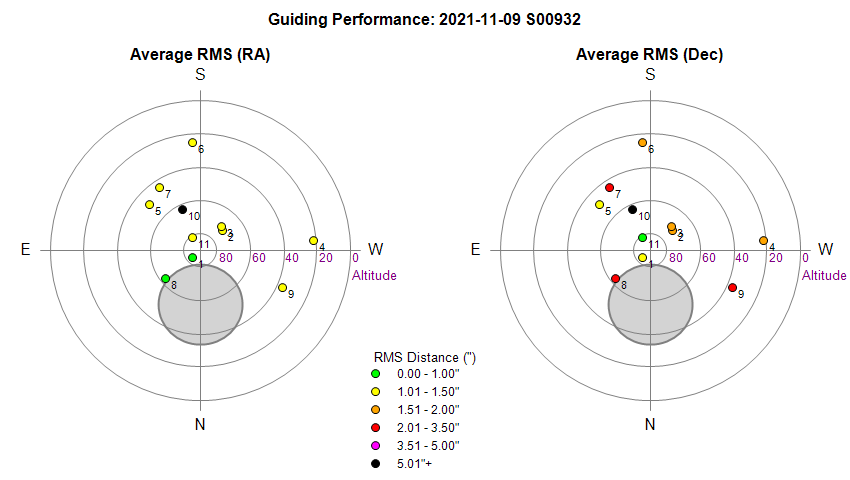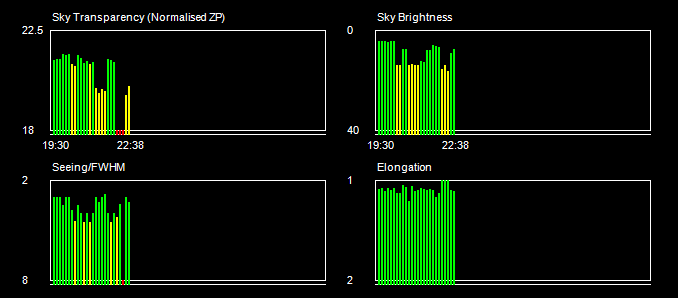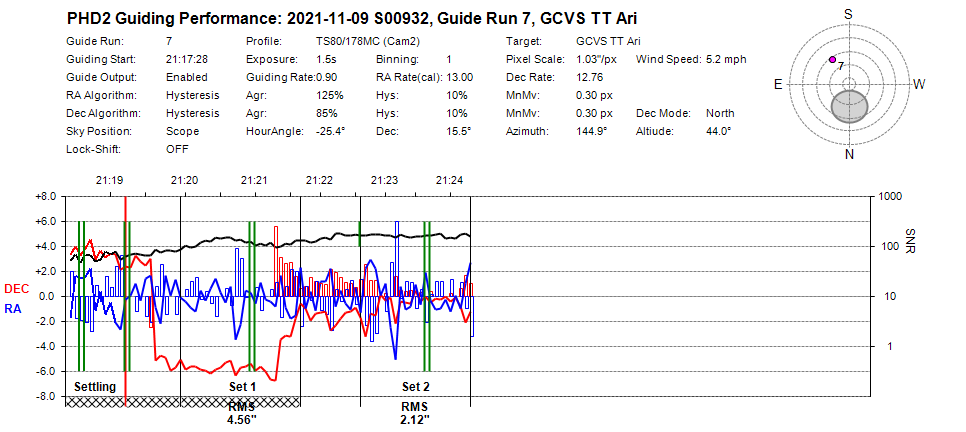David's Astronomy Pages
Notes - Session 932 (2021-11-09)
Notes
(S931)
Notes
Main
Home
Page
Notes
(S933)
David's Astronomy Pages
|
Notes (S931) |
Notes Main |
Home Page |
Notes (S933) |
Main aims
Equipment & Software
Highlights
Summary Plots & Logs
| Observing Plan | ||||||||||||||||||||||||||||||||||||||||||||||||||||||||||||||||||||||||||||||||||||||||||||||||||||||||||||||||||||||||||||||||||||||||||||||||||||||||||||||||||||||||||||||||||||||||||||||||||||||||||||||||||||||||||||||||||||||||||||||||||||||||||||||||||||||||||||||||||||||||||||||||||||||||||||||||||||||||||||||||||||||||||||||||||||||||||||||||||||||||||||||||||||||||||||||||||||||||
 |
||||||||||||||||||||||||||||||||||||||||||||||||||||||||||||||||||||||||||||||||||||||||||||||||||||||||||||||||||||||||||||||||||||||||||||||||||||||||||||||||||||||||||||||||||||||||||||||||||||||||||||||||||||||||||||||||||||||||||||||||||||||||||||||||||||||||||||||||||||||||||||||||||||||||||||||||||||||||||||||||||||||||||||||||||||||||||||||||||||||||||||||||||||||||||||||||||||||||
|
Observing Result |
||||||||||||||||||||||||||||||||||||||||||||||||||||||||||||||||||||||||||||||||||||||||||||||||||||||||||||||||||||||||||||||||||||||||||||||||||||||||||||||||||||||||||||||||||||||||||||||||||||||||||||||||||||||||||||||||||||||||||||||||||||||||||||||||||||||||||||||||||||||||||||||||||||||||||||||||||||||||||||||||||||||||||||||||||||||||||||||||||||||||||||||||||||||||||||||||||||||||
 |
||||||||||||||||||||||||||||||||||||||||||||||||||||||||||||||||||||||||||||||||||||||||||||||||||||||||||||||||||||||||||||||||||||||||||||||||||||||||||||||||||||||||||||||||||||||||||||||||||||||||||||||||||||||||||||||||||||||||||||||||||||||||||||||||||||||||||||||||||||||||||||||||||||||||||||||||||||||||||||||||||||||||||||||||||||||||||||||||||||||||||||||||||||||||||||||||||||||||
| Dome & Scope Slewing Performance | ||||||||||||||||||||||||||||||||||||||||||||||||||||||||||||||||||||||||||||||||||||||||||||||||||||||||||||||||||||||||||||||||||||||||||||||||||||||||||||||||||||||||||||||||||||||||||||||||||||||||||||||||||||||||||||||||||||||||||||||||||||||||||||||||||||||||||||||||||||||||||||||||||||||||||||||||||||||||||||||||||||||||||||||||||||||||||||||||||||||||||||||||||||||||||||||||||||||||
 |
||||||||||||||||||||||||||||||||||||||||||||||||||||||||||||||||||||||||||||||||||||||||||||||||||||||||||||||||||||||||||||||||||||||||||||||||||||||||||||||||||||||||||||||||||||||||||||||||||||||||||||||||||||||||||||||||||||||||||||||||||||||||||||||||||||||||||||||||||||||||||||||||||||||||||||||||||||||||||||||||||||||||||||||||||||||||||||||||||||||||||||||||||||||||||||||||||||||||
| Slew/Centering Performance | ||||||||||||||||||||||||||||||||||||||||||||||||||||||||||||||||||||||||||||||||||||||||||||||||||||||||||||||||||||||||||||||||||||||||||||||||||||||||||||||||||||||||||||||||||||||||||||||||||||||||||||||||||||||||||||||||||||||||||||||||||||||||||||||||||||||||||||||||||||||||||||||||||||||||||||||||||||||||||||||||||||||||||||||||||||||||||||||||||||||||||||||||||||||||||||||||||||||||
 |
||||||||||||||||||||||||||||||||||||||||||||||||||||||||||||||||||||||||||||||||||||||||||||||||||||||||||||||||||||||||||||||||||||||||||||||||||||||||||||||||||||||||||||||||||||||||||||||||||||||||||||||||||||||||||||||||||||||||||||||||||||||||||||||||||||||||||||||||||||||||||||||||||||||||||||||||||||||||||||||||||||||||||||||||||||||||||||||||||||||||||||||||||||||||||||||||||||||||
|
Guiding Performance |
||||||||||||||||||||||||||||||||||||||||||||||||||||||||||||||||||||||||||||||||||||||||||||||||||||||||||||||||||||||||||||||||||||||||||||||||||||||||||||||||||||||||||||||||||||||||||||||||||||||||||||||||||||||||||||||||||||||||||||||||||||||||||||||||||||||||||||||||||||||||||||||||||||||||||||||||||||||||||||||||||||||||||||||||||||||||||||||||||||||||||||||||||||||||||||||||||||||||
 |
||||||||||||||||||||||||||||||||||||||||||||||||||||||||||||||||||||||||||||||||||||||||||||||||||||||||||||||||||||||||||||||||||||||||||||||||||||||||||||||||||||||||||||||||||||||||||||||||||||||||||||||||||||||||||||||||||||||||||||||||||||||||||||||||||||||||||||||||||||||||||||||||||||||||||||||||||||||||||||||||||||||||||||||||||||||||||||||||||||||||||||||||||||||||||||||||||||||||
 |
||||||||||||||||||||||||||||||||||||||||||||||||||||||||||||||||||||||||||||||||||||||||||||||||||||||||||||||||||||||||||||||||||||||||||||||||||||||||||||||||||||||||||||||||||||||||||||||||||||||||||||||||||||||||||||||||||||||||||||||||||||||||||||||||||||||||||||||||||||||||||||||||||||||||||||||||||||||||||||||||||||||||||||||||||||||||||||||||||||||||||||||||||||||||||||||||||||||||
| Sky Conditions (Locate Frames) | ||||||||||||||||||||||||||||||||||||||||||||||||||||||||||||||||||||||||||||||||||||||||||||||||||||||||||||||||||||||||||||||||||||||||||||||||||||||||||||||||||||||||||||||||||||||||||||||||||||||||||||||||||||||||||||||||||||||||||||||||||||||||||||||||||||||||||||||||||||||||||||||||||||||||||||||||||||||||||||||||||||||||||||||||||||||||||||||||||||||||||||||||||||||||||||||||||||||||
 |
||||||||||||||||||||||||||||||||||||||||||||||||||||||||||||||||||||||||||||||||||||||||||||||||||||||||||||||||||||||||||||||||||||||||||||||||||||||||||||||||||||||||||||||||||||||||||||||||||||||||||||||||||||||||||||||||||||||||||||||||||||||||||||||||||||||||||||||||||||||||||||||||||||||||||||||||||||||||||||||||||||||||||||||||||||||||||||||||||||||||||||||||||||||||||||||||||||||||
|
Night Sky Summary Plot Top axis: Sky Brightness at Zenith (in ADU/s) Lefthand axis: Local Time (hh LT). Righthand axis: Sun Altitude (degs) |
||||||||||||||||||||||||||||||||||||||||||||||||||||||||||||||||||||||||||||||||||||||||||||||||||||||||||||||||||||||||||||||||||||||||||||||||||||||||||||||||||||||||||||||||||||||||||||||||||||||||||||||||||||||||||||||||||||||||||||||||||||||||||||||||||||||||||||||||||||||||||||||||||||||||||||||||||||||||||||||||||||||||||||||||||||||||||||||||||||||||||||||||||||||||||||||||||||||||
 |
||||||||||||||||||||||||||||||||||||||||||||||||||||||||||||||||||||||||||||||||||||||||||||||||||||||||||||||||||||||||||||||||||||||||||||||||||||||||||||||||||||||||||||||||||||||||||||||||||||||||||||||||||||||||||||||||||||||||||||||||||||||||||||||||||||||||||||||||||||||||||||||||||||||||||||||||||||||||||||||||||||||||||||||||||||||||||||||||||||||||||||||||||||||||||||||||||||||||
|
Actual Weather vs Pre-Session Weather Forecast |
||||||||||||||||||||||||||||||||||||||||||||||||||||||||||||||||||||||||||||||||||||||||||||||||||||||||||||||||||||||||||||||||||||||||||||||||||||||||||||||||||||||||||||||||||||||||||||||||||||||||||||||||||||||||||||||||||||||||||||||||||||||||||||||||||||||||||||||||||||||||||||||||||||||||||||||||||||||||||||||||||||||||||||||||||||||||||||||||||||||||||||||||||||||||||||||||||||||||
 |
||||||||||||||||||||||||||||||||||||||||||||||||||||||||||||||||||||||||||||||||||||||||||||||||||||||||||||||||||||||||||||||||||||||||||||||||||||||||||||||||||||||||||||||||||||||||||||||||||||||||||||||||||||||||||||||||||||||||||||||||||||||||||||||||||||||||||||||||||||||||||||||||||||||||||||||||||||||||||||||||||||||||||||||||||||||||||||||||||||||||||||||||||||||||||||||||||||||||
 |
||||||||||||||||||||||||||||||||||||||||||||||||||||||||||||||||||||||||||||||||||||||||||||||||||||||||||||||||||||||||||||||||||||||||||||||||||||||||||||||||||||||||||||||||||||||||||||||||||||||||||||||||||||||||||||||||||||||||||||||||||||||||||||||||||||||||||||||||||||||||||||||||||||||||||||||||||||||||||||||||||||||||||||||||||||||||||||||||||||||||||||||||||||||||||||||||||||||||
| Session Event Log | ||||||||||||||||||||||||||||||||||||||||||||||||||||||||||||||||||||||||||||||||||||||||||||||||||||||||||||||||||||||||||||||||||||||||||||||||||||||||||||||||||||||||||||||||||||||||||||||||||||||||||||||||||||||||||||||||||||||||||||||||||||||||||||||||||||||||||||||||||||||||||||||||||||||||||||||||||||||||||||||||||||||||||||||||||||||||||||||||||||||||||||||||||||||||||||||||||||||||
|
||||||||||||||||||||||||||||||||||||||||||||||||||||||||||||||||||||||||||||||||||||||||||||||||||||||||||||||||||||||||||||||||||||||||||||||||||||||||||||||||||||||||||||||||||||||||||||||||||||||||||||||||||||||||||||||||||||||||||||||||||||||||||||||||||||||||||||||||||||||||||||||||||||||||||||||||||||||||||||||||||||||||||||||||||||||||||||||||||||||||||||||||||||||||||||||||||||||||
| Session Alerts | ||||||||||||||||||||||||||||||||||||||||||||||||||||||||||||||||||||||||||||||||||||||||||||||||||||||||||||||||||||||||||||||||||||||||||||||||||||||||||||||||||||||||||||||||||||||||||||||||||||||||||||||||||||||||||||||||||||||||||||||||||||||||||||||||||||||||||||||||||||||||||||||||||||||||||||||||||||||||||||||||||||||||||||||||||||||||||||||||||||||||||||||||||||||||||||||||||||||||
|
Back to Top
Back to Top
Issue Observatory Shutter failed to fully close (hung up on bottom aperture lip / rubber strip.
Description
Due to deteriorating conditions a
SoftSupend was called by the Obs.Manager at 22:43 during automated
operations. After finishing the active target the session was suspended at
22:58 and the shutter commanded to close. Checking the observatory status
at 23:20 it was noticed that the shutter state in AstroMain and DeviceHub
was still 'Closing' , which was a state that was confirmed by examining the
Pulsar Ascom log file.
A trip out to the Observatory showed that the lower edge of the Shutter
had hung up on the rubber strip that sits on the lower edge of the aperture
leaving the shutter almost closed but still around 2cm from its fully shut
position.
The Shutter drive unit motor had turned itself
off, or at least there were no growling noises coming from it (this is good
and answers a long standing question about what happens if the shutter hangs
up).
Whilst the dome was reasonably weather tight the shutter hadn't
had been able to reach and depress the lower limit switch. This left
the shutter still communicating a closing state. Automated
operations were left in limbo with the shutter in this protracted 'closing'
state.
The shutter was partially opened using the red button on Shutter Drive
Unit and then pulling the lower aperture inwards by hand the shutter was
finally closed (again using the red button).
It was decided that it
would be prudent to end the observing session given the uncertainty in
continued operation of the shutter and then review things the following day (4 hours of good
observing time was lost later in the night, but ending the session was
the safest option).
Failure Analysis
Investigating it is clear that the
primary cause of the failure was that the roof panel below the aperture, to
which the shutter drive is attached, bows out somewhat, there is 1 to 1.5cm
of play in the panel and it supposed that the shutter just happened to hang
up on this occasion. The roof has been this way since its original
construction and erection of the observatory in 2018 , but it hasn't
presented a problem before now . Dome roof was constructed on a
flat surface and at the time it didn't seem that the 4 four quadrants would
fit together without the bulge appearing and
keep the surfaces of the four quadrants smooth where they abutted.
Day time pictures that try to illustrate the failure the previous night are
shown below.
A rubber strip is attached to the bottom lip of the aperture. This
strip does make the lip wider than it would be without it, but even with
this rubber strip the shutter has previously always managed to ride over the
bottom aperture lip before now and fully close.
Re-reading the
Installation manual I see that it does say "Note that domes with
shutter drives do not have the rubber strip" however I had sufficient
length of rubber strip supplied with the observatory that I used a piece of
it on the lower aperture lip without any problem up to now. I just had to
cut out an appropriate region from the strip at the point where the limit switch is
positioned. The manual shows pictures in the Dome Drive section
both with and without this rubber strip being present.
With hindsight this was probably a problem just waiting to happen, but there may be two contributing factors to trigger it on this occasion
Attempted Fix/Workaround
In looking for a fix/resolution to the problem I
looked at a) ways to resolve the underlying cause and b) ways to minimise
the risk of a future failure.
I lfirst looked at potential ways of
pulling in the panel but I couldn't think of anything that would work:
I then considered ways in which the shutter might be able to sit further from the bottom aperture lip, but again I couldn't think of anything that would easily work (the force of the chain tied to bolt attachment on bottom end of shutter automatically draws the bottom of the shutter inwards towards the aperture lip each time the shutter is closed)
Unable to see a means to stop the panel from bowing outwards (i.e. no clear way to fix the underlying problem) it was decided that the best way of resolving the issue (or at least minimising the risk of it happening again) is to remove the rubber strip from the aperture, reducing the effective width of the aperture lip. This was done today (2021-11-10).
Daytime tests (2021-11-11) indicate that the fix works and observatory operations can continue. The potential of hang up is still there however since the root cause hasn't been dealt with. Dome closing operations will consequently be monitored closely in the next two or three sessions to allow confidence in the shutter system to be regained.
Update 2021-12-05
An attempt was made to see if the panel could be 're-trained' to stay in its correct 'non-bulged' state, by employing a bungee cord to pull the panel inwards whilst heat was applied to the panel with a hair-dryer and then left to cool down. The tie was left in place for about one hour. It may or may not have made a slight improvement. The cord was removed after an hour since an observing session will probably proceed this evening, and the tie cannot be left in place whilst the dome rotates in azimuth. Although it is doubtful that the 'training' will work, further and longer attempts to 'train' the panel will be made over the next few weeks.
Back to Top
Issue
A couple of targets showed a signicant Dec jump
just before imaging started.
Description
Large Dec Jumps were noted at start of
Dec guiding for two targets (NGC 157 and TT Ari) both of which lay in the
SSE sky. In each case a single Dec guide pulse caused the scope position to
significantly overshoot to the opposite side of lock position. For example
from a position 2' north of lock position a single Dec guide (85% agression,
ie a 1.7' guide) lead to the scope moving 5' south of lock position.
The issue comes onto top of an ongoing and annoying general issue with Dec
Guiding (especially west of Meridan), which still hasn't been resolved even
after replacing the Dec Motor Unit Assembly.
Although imaging wasn't
unduly affected on these two occasions, the issue is worthy of
documentation, investigation and further monitoring.
1) NGC 157
Sky conditions good/stable. Target lay
east of Meridian and a North Dec Guide Mode was autoselected as slight polar
misalignment causes stars on this side of Meridian to drift northwards
(leading to -ve Dec errors). Guide star would normally begin at
position with a zero Dec error. On this occasion the guide star (actually
the average of multiple guide stars) seemed to start at an anomolous
position some 5" above the lock position (ie +ve Dec Error) were
uni-directional (North) Dec guiding couldn't correct for the position error.
The star gradually drifted back towards zero, but only reached around 2-3"
by end of autofocusing. At this point the Guide manager recognised the
issue and with the message 'Star needs to be moved back to lock position'
it intervened to change the Dec Guide Mode to South. With a single
output the Dec position jumped from +3" to -4". The guide star
was then on the 'wrong side' for Uni-directional guiding to correct.
After 4 minutes and with the target approaching Meridian (Frame 1), the
guide star drifted back towards the lock position again afterwhich with
reduced star drift and occasional small Dec South nudges, the target was
successfully guided for the remaining 4 frames .

2) TT Ari
Sky conditions moderate / unstable. Target
lay east of Meridian and again a North Dec Guide Mode was autoselected
as the slight polar misalignment causes stars on this side of Meridian
to drift northwards (leading to -ve Dec errors). Again the guide
star (actually the average of multiple guide stars) seemed to start at
an anomolous position some 4" above the lock position (ie +ve Dec Error)
were uni-directional (North) Dec guiding couldn't correct for the
position error. Autofocusing aborted itself as the selected focus
star was deemed to be too dim for reliable focusing (focusing will be
pretty reasonable as scope had been focused at start of previous target,
NGC 157). The Guide manager recognised that the guide star position
couldn't be corrected with the selected North Guide Mode and with the
message 'Star needs to be moved back to lock position' it
intervened at 21:19:33 to change the Dec Guide Mode to South.
After just a single guide pulse the Dec position jumped from +2.5" to
-5". After a 30s delay following Dec Guide Mode change the, 1st
frame was started at 21:20:04. The guide star was then on the
'wrong side' for South Mode guiding to correct. After a
couple of minutes the Guide Manager intervened again at 21:21:16 and
with a further message 'Star needs to be moved back to lock position'
and the Dec Guide mode was put back to 'North', the guide star was then
slowly brought back toward the lock position but didn't reach zero line
until after a further two minutes of North guiding. Frames belonging to
second image set began at 21:21:47

Analysis
This behaviour hasn't really been noticed
before. It has the hallmarks of being due to an overactive
backlash compensation.
(large Dec backlash has historically been an
issue for the telescope and is why Uni-Directional Dec Guiding is used
Backlash hasn't been remeasured since installing new Dec Motor Unit
assembly and it might have changed). Backlash compensation
is turned off in PHD2, but in the Scope itself the Dec/Alt backlash is
set to 130% (permitted values 0% to 200%) .
Other Issues & Observations
a) Vertical lines
marking start of image set are being plotted at positions which are
before their actual start times.
- In case of start of Set 1, imaging
started at 21:20:04, but graph seems to show line being plotted at
21:19:56 (8s difference)
- In case of start of Set 2, imaging started
at 21:22:44, but graph seems to show line being plotted at 21:21:34 (10s
difference)
Is this due to mis-positioning of the line or a
mispositioning of the ticks/labels or is this simply the limit of the
resolution of the graph ?
b) Vertical Line at 21:21:39 doesn't
correspond to either a start or an end of image set and shouldn't have
been drawn.
It occurs 33s (~30s) after Dec Guide Mode
change at 21:21:16 which would normally be associated with start of a
frame and lead to a vertical line, but in this case it is occuring
within a frame.
Code for putting in cross-hatching when camera
isn't actively imaging is confused by the Dec Guide Mode change and
draws cross-hatching going back to start rather than just back to end of
last active image (ie end of frame 1)
Actions
![]() Dec/Alt Backlash in scope changed reduced from 130% to 80%.
(Done 2021-11-10)
Dec/Alt Backlash in scope changed reduced from 130% to 80%.
(Done 2021-11-10)
![]() Monitor Dec Guide behaviour in following sessions (Done 2021-11-17)
Monitor Dec Guide behaviour in following sessions (Done 2021-11-17)
![]() Run PHD2's guiding assistant in order to re-measure scope's backlash
value (Done 2021-11-21)
Run PHD2's guiding assistant in order to re-measure scope's backlash
value (Done 2021-11-21)
These should be
measured at a number of points but including points where low backlash
levels
are evident from recent
data (S934, Guide Run 23 at Az 117.8, Alt 40.6 , S934,
Guide Run 31 at Az 144.6, Alt 40.7)
![]() Modify Guide Manager code that deals with insert of frame boundary
starts/end lines and insert of cross-hatching when taking ImageSets
(VRVR mode) instead of just individual frames (VVRR mode)
Modify Guide Manager code that deals with insert of frame boundary
starts/end lines and insert of cross-hatching when taking ImageSets
(VRVR mode) instead of just individual frames (VVRR mode)
Update 2021-11-17
The same issue occurred in Session S934 (2021-11-16) on two specific
guide runs : Guide Run 23 (Scholz's Star) and Guide Run 31 (UGC 5994).
Again these two cases lay in the SSE sky as seen previously. Examining
the session (PHD2) log file that documents the communications to/from
PHD2 for the last target of the session (UGC 5994, Guide Profile 31)
shows that prior to the first Dec Mode Change shown on the guiding chart
just prior to Frame1 image when Dec position jumped from +4 to -4 with a
single guide pulse (South), there was an earlier single guide pulse
(North) just after guiding starte, but before the start of the guiding
chart plot, when from a dy position of -0.72 a Dec Guide pulse of -0.553
saw the scope jump to +4.894. This explains how the guiding
charts can start with the guidestar several arc secs away from the lock
position. The two unexpected jumps in Dec position with just a
single pulse suggests that the Dec Anti-Backlash setting in the scope is
still too excessive even after being reduced from +130% to +80%.
It seems that the backlash characteristics of the scope with the new Dec
Motor Unit are significantly different to those with the old motor unit.
Data from this initial jump suggests that the current 80%
anti-backlash setting is moving scope in this particular case by around
5" (4.894 - (-0.72) - 0.533) At the used guide speed
of x0.90 this corresponds to spinning the Dec Motor equivalent to a
guide period of 0.37s (calculated from 5 / (15.04 * 0.90) ).
Update 2021-11-21
Four Dec backlash measurements were made during a test session on 2021-11-21. These included two measurements at sky positions corresponding to the earlier NGC 157 and TT ARi guiding anomalies which seemed to show excessive anti-backlash behaviour by the scope. These showed no change in Declination Backlash from that measured in 2019 and doesn't indicate why the scope anti-backlash setting would be excessive now when the same anti-backlash setting evidentally wasn't prior to the installation of the new Dec motor on 2021-10-15.
Back to Top
| This Web Page: | Notes - Session 932 (2021-11-09) |
| Last Updated : | 2024-03-23 |
| Site Owner : | David Richards |
| Home Page : | David's Astronomy Web Site |